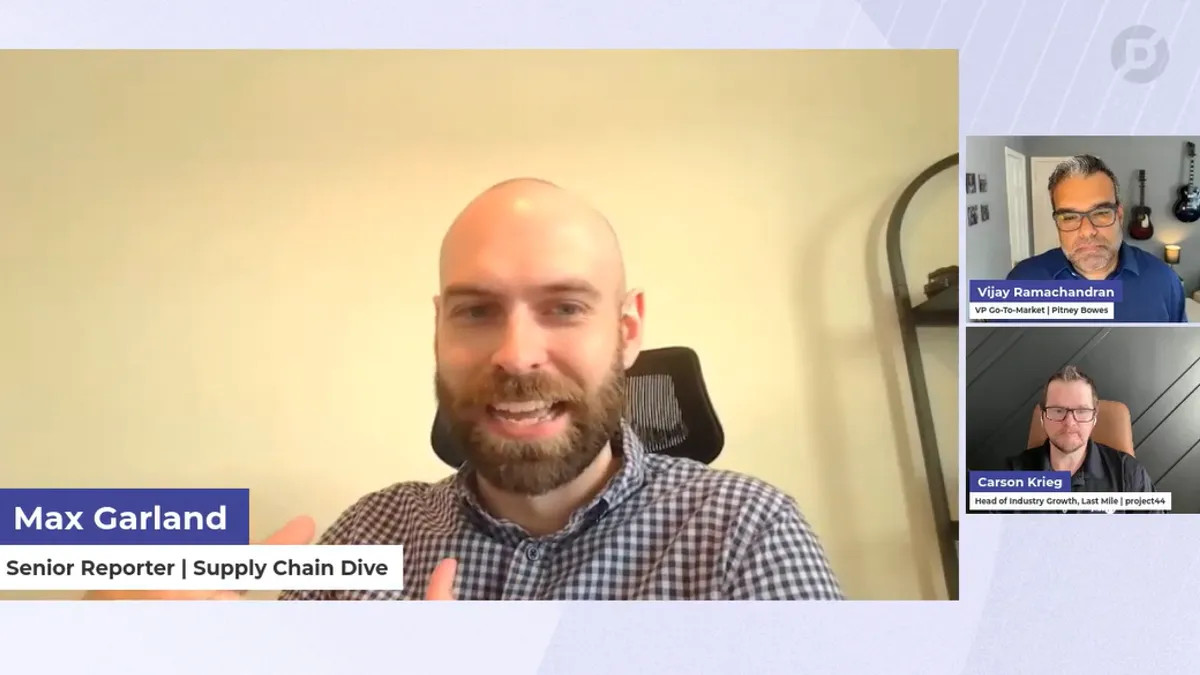Editor’s Note: Register here to watch an on-demand replay of Supply Chain Dive’s Sept. 21 virtual event “Insights into the Holiday 2023 season.”
As yet another unconventional peak period approaches, over-communication will help carriers and shippers provide strong holiday service, Supply Chain Dive panelists said during a Sept. 21 panel discussion as part of the event “Insights into the Holiday 2023 season.”
“The number one thing — it’s not surprising — is share your forecast,” Vijay Ramachandran, VP of go-to-market enablement and experience at Pitney Bowes, said during the panel. This includes communication about when shippers plan to run sales or promotions, he added.
It can be hard for smaller shippers to communicate directly with larger carriers, Ramachandran said. It’s important to have a partner with account managers that monitor a company’s forecast and ensure it’s equipped with adequate transportation and labor during peak promotional periods, he added.
“You should really think about looking at partners that have that kind of conversational approach to planning,” he added. “You want that give and take to say, ‘here’s the parts of our network where we’re seeing the most available capacity, what periods during the holiday season are you seeing expected peaks in demand, and can we make sure that we’re tied together?’”
While volume forecasts can’t be completely accurate due to evolving consumer trends, “there’s a lot that can be done just … providing that your carrier is giving you that relationship where you can trade information back and forth on both demand and capacity,” Ramachandran said.
Carson Krieg, director of global alliances at project44, agreed that over-communication remains a strategic move for shippers and carriers this peak season.
“Share historical lane data, combine that with demand forecasts and basically be hand-in-hand with your carrier,” Krieg said.
Amazon has pushed peak season to start even earlier with their second prime days of the year starting Oct. 10-11.
“It really is a longer peak season than it has been, historically,” Krieg said. “So [build] out that 75-day plan around seasonality and peak volumes, and where you think you’re going to see your demand from a regional standpoint.”













